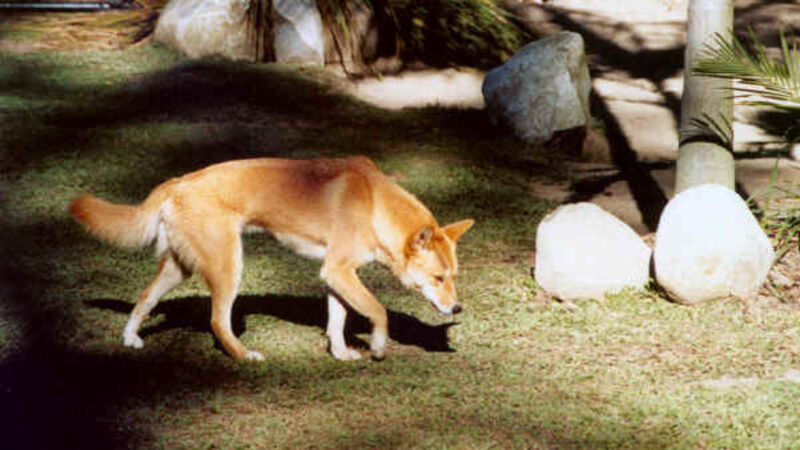Richard Collins: Wild and captive dingoes compared to domestic dogs

Dingo on Fraser Island, Queensland, Australia
"I have never seen a case more governed by human frailties," declared Tony Jones, pathologist at the Chamberlain dingo trial.
On the night of August 18, 1980, Lindy Chamberlain, her husband, and their nine-week-old daughter Azaria, were camping at Uluru, ’Ayer’s Rock’, in the Australian outback. Lindy spotted a dingo running from the tent where Azaria was sleeping. The child’s cot was empty. "My god, my god, the dingo has got my baby," she screamed.
Azaria’s body was never found. The police dismissed the idea that a dingo had taken her. That story, they said, was "a calculated fanciful lie"; Lindy had killed the child and had hidden the body. She was convicted of murdering her daughter and sentenced to life-imprisonment.

Dingoes, Larger than foxes, but smaller than wolves, are lean hardy predators, their yellow-brown coats providing camouflage in the dry semi-desert habitats where they live. Members of the dog family, they were introduced to Australia either accidentally or deliberately. The earliest remains found to date are 3,450 years old, but the species probably arrived several thousand years earlier.
These apex predators are shy and keep to themselves. People have been injured accidentally while feeding them, but human fatalities are exceedingly rare. In a paper published in 2017, researchers from Griffith University wrote that while "dingoes pose minimal risk to humans, some risk remains, particularly where poorly supervised children are concerned". Packs may attack sheep or take a calf.

I have been to Uluru, a site sacred to native Australians. It’s a strange and creepy place. I didn’t climb the great red rock — the locals don’t like you doing so.
Three years after Azaria’s disappearance, a climber fell to his death. Police investigating the accident stumbled on a child’s jacket near a dingo den. The garment was identified as Azaria’s. A dingo, it seemed, was the culprit after all. The Chamberlains were exonerated.
Domestic dogs are more dangerous, to man and livestock, than dingoes. People have been killed by them even in countries where rabies is not endemic. Dingoes and dogs interbreed and it was widely believed that most of Australia’s dingoes were virtual mongrels. Could some of these hybrids have inherited aggressive tendencies from a dog ancestor? If so, it might help explain the behaviour of the dingo in the Chamberlain case.
https://t.co/QGAObw54iv We don't have "wild dogs" in Australia, we have dingoes. Dingoes are a native animal. DNA testing shows most wild dingoes are pure or high integrity. There were few to no feral dogs in the bush. @CES_UNSW @unswbees @UNSWScience @EERC_UNSW @mikeletnic
— Dr Kylie Cairns (@dr_cairns) June 3, 2023
A paper just published, however, claims that hybridisation is much rarer than was thought.
Researchers from the University of New South Wales analysed DNA samples collected from 391 dingoes in the wild or kept in zoos. They found that more than 87% of the animals tested were entirely pure-bred. Only two dingoes from New South Wales and Queensland had less than 70% dingo ancestry. The extent of interbreeding, the team concluded, had been over-estimated by as much as 30% in previous studies.
"Dingoes are maintaining their identity" and are "challenging the view that pure dingoes are on the decline due to cross-breeding", they say on the University website.
It’s unlikely, therefore, that the presence of dog genes in a dingo led to the horrible death of little Azaria.






